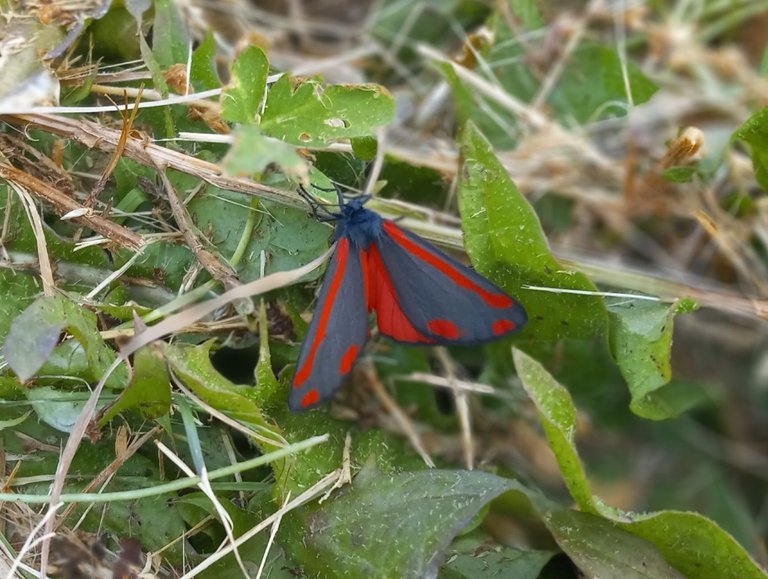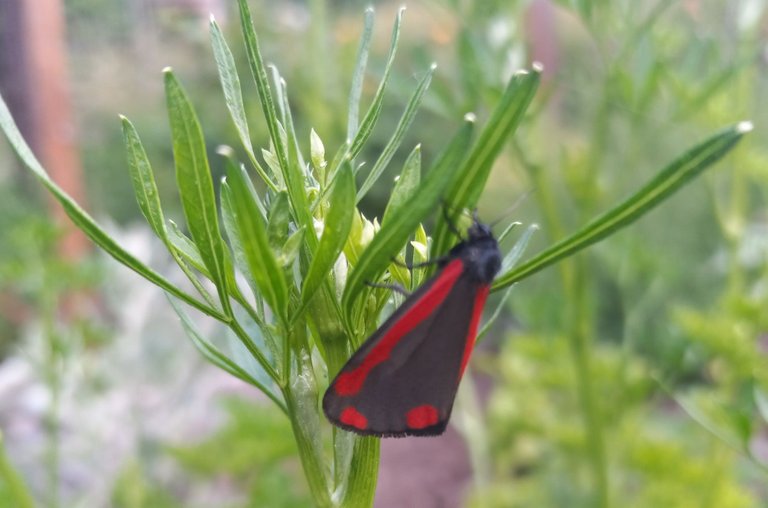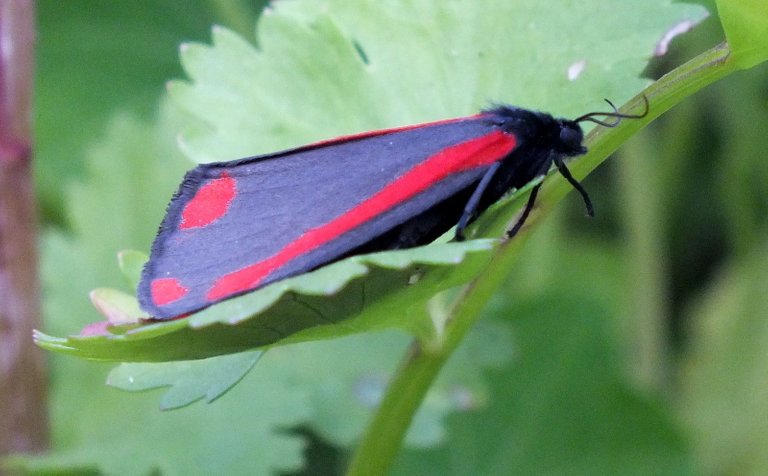When I went to do my "morning rounds" in our garden, something unusually bright suddenly fluttered across my path:

It was just so eye-catchingly vibrant red in a way I don't often remember seeing in nature, except for maybe a few berries and autumn leaves.
It took a while before this wee visitor finally slowed down for long enough for me to get a closer look.
After moving around for a good while, it finally settled on a sprig of parsley, allowing for a few slightly more focused pictures.
This is a Cinnabar Moth (Tyria jacobaeae), and it's one of the few day-flying moths we have around here, but I'm sure it gets confused with butterflies on a regular basis.

With a little reading, I learned that it can actually be a somewhat beneficial insect, in that they often lay their eggs on tansy ragwort — which is a highly invasive nuisance plant in our area. After the eggs hatch, the larvae can decimate the ragwort plants, preventing flowering and thus seeding.
Interestingly enough, I had this confirmed by our neighbor's yard service who mentioned the other day that she grew up on a farm, and they would just release the larvae on the ragwort to control it. Natural plant control!

Further to that, the cinnabar moth is actually not native to North America! It was specifically introduced here from Europe to help control the spread of tansy ragwort.
It's an interesting cycle, in the sense that the ragwort is toxic to most animals, but the cinnabar moth larvae can metabolize it without problem. In turn, the larvae have few natural predators because they are toxic/distasteful to most birds and animals.

I thought it was a rather striking and beautiful garden visitor, and I actually spotted a second one flying by while admiring the first one.
Evidently is it flight season for them, at the moment.
Thanks for visiting! Comments are always welcome!
(all images are my own!)


Thank you for reading, please share your thoughts because I love comments and then take a minute to look at the community of #Silverbloggers and join us if you think you qualify. (If you think you qualify, you probably do!)






